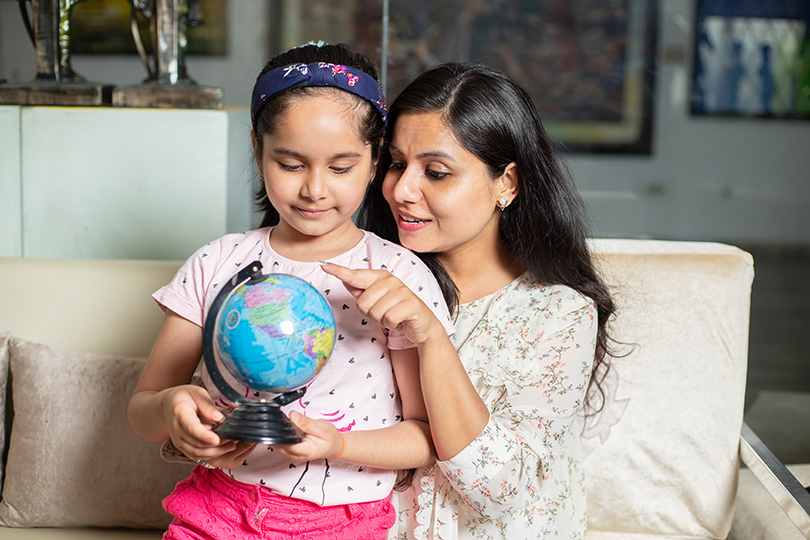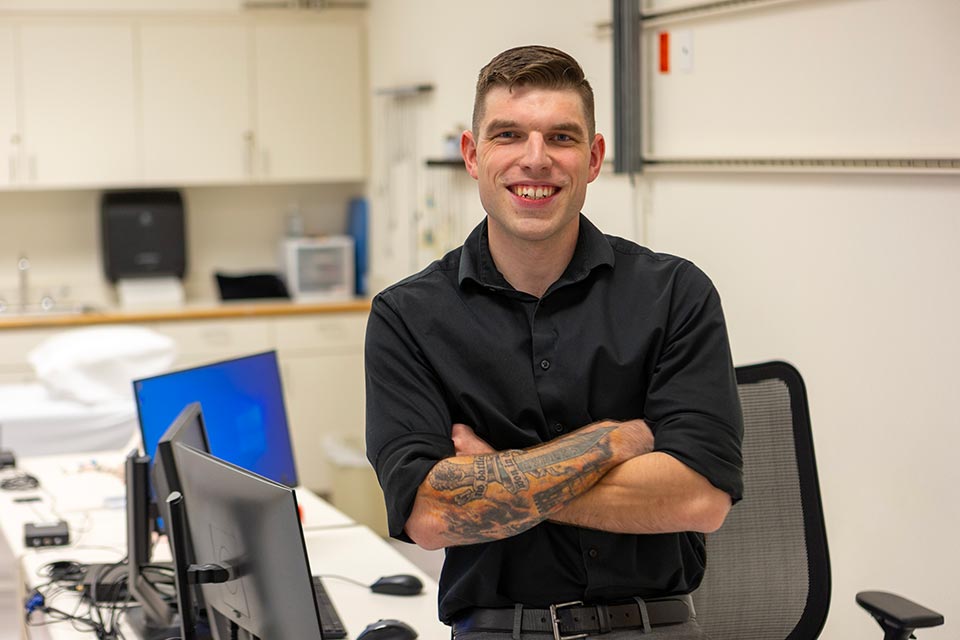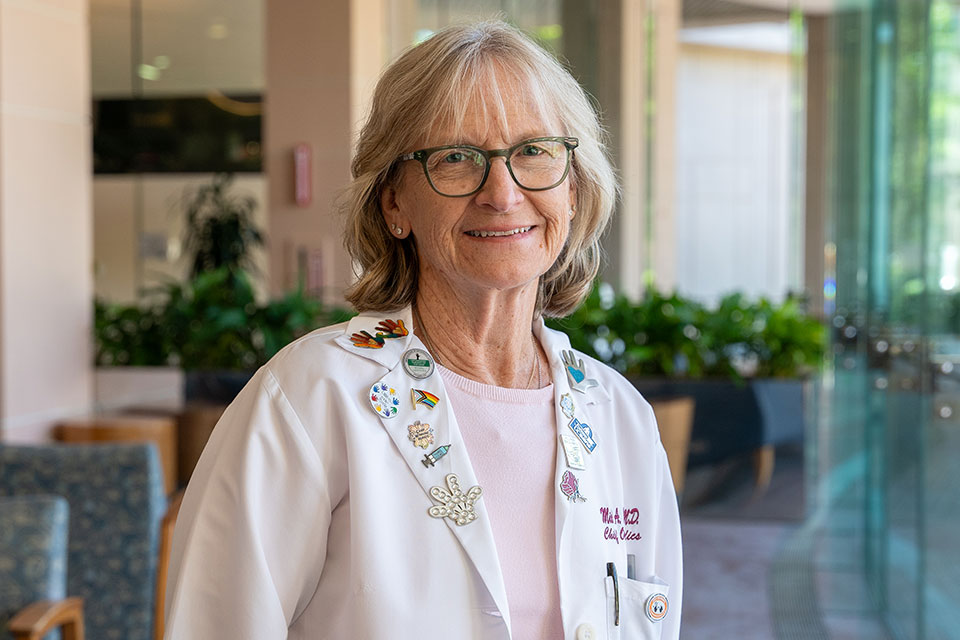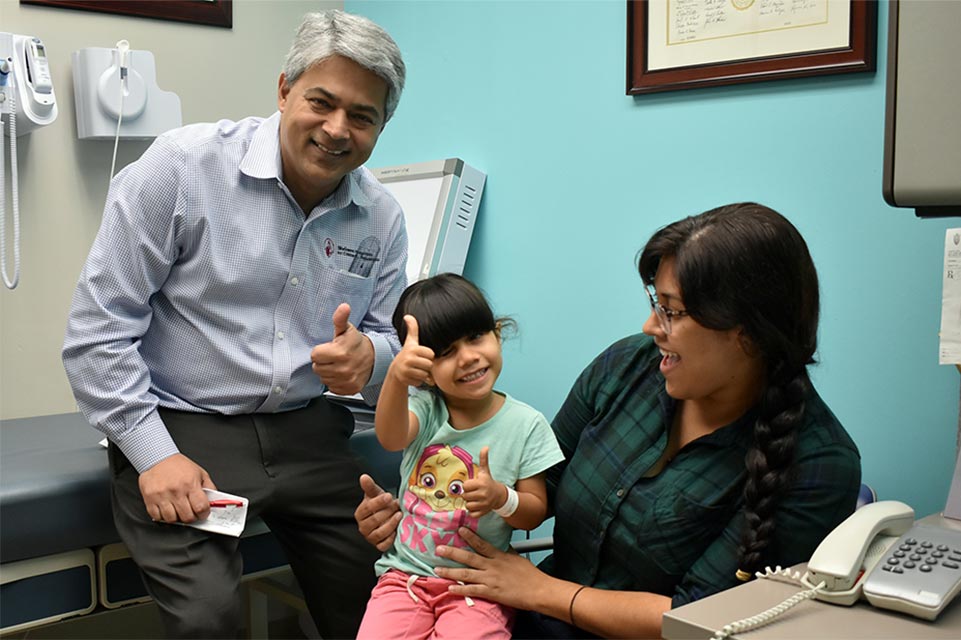Spinal Cord Injury
Families who choose Shriners Children's for their child's spinal cord treatment can feel confident they've made the best decision for their child.
In 1980, Shriners Children's launched our spinal cord injury rehabilitation program. Our specialized teams are devoted to giving children with spinal cord injuries (SCI) all-inclusive and thoughtful care that will build up their ability, confidence and independence.
A number of issues, such as infection, tumors, autoimmune conditions and trauma, can cause spinal cord injuries. Spinal cord injuries affect everyone differently, but the symptoms typically include weakness, loss of feeling, and bowel or bladder changes.
Spinal cord injuries have a huge impact on the lives of both the child and their family. Our teams recognizes this and work very hard to put together a care plan that meets the needs of each family.
The primary goal of our spinal cord injury program is to make sure children are able to participate in their communities, be independent and live happy lives free from medical complications.
Types of Spinal Cord Injuries
Symptoms related to spinal cord injury, and the severity of the injury, depend on the location of the trauma.
If the cervical spine, or back of the neck area, is injured, the result will likely be loss of strength and muscle function – with varying degrees of paralysis in the arms and legs. The common term used by medical professionals for this spinal cord injury outcome is tetraplegia, formerly referred to as quadriplegia. If the injury is quite severe, it can also affect the child’s ability to breathe on their own.
If the thoracic spine, or the upper and middle part of the back, is injured, the arms and hands continue to function as they did prior to the injury, while the legs become impaired. This is referred to as paraplegia. The severity of thoracic spinal cord injuries varies. The injury may cause minor issues with the ability to move or feeling in the lower limbs; or can lead to total paralysis from the waist down.
If the lumbar or sacral spine, or the lowest parts of the back, are injured, it can cause paralysis and loss of function in the legs. This is also referred to as paraplegia. The severity of lumbar and sacral spinal cord injuries varies. The injury may also cause loss of nerve and muscle control to the bladder, bowel, and sexual organs.
It is important to note that not all spinal cord injuries lead to paralysis. There can be varying medical issues that follow a spinal cord injury, which can interfere with other bodily functions.
Treatment of Spinal Cord Injuries
Every child deserves a treatment plan that is personalized to their needs and utilizes advanced and innovative techniques. Shriners Children's is internationally known and respected for our expertise in pediatric spinal cord injury care. We work hard to provide compassionate and life-changing to care to children in a way that supports them physically and emotionally.
Shriners Children's offers:
- Acute care, including surgical spine stabilization
- Primary and secondary rehabilitation
- Tendon transfers that may restore function and use of arms
- Surgical implant of a phrenic nerve pacer that has allowed severely injured children to breathe without a ventilator
- Upper extremity surgical reconstruction
- Urologic surgical reconstruction
The Setting
Comprehensive inpatient and outpatient services are provided in a family-centered and culturally sensitive environment. Each patient has a care manager who will assist with all aspects of the visit to our hospital, including lodging and transportation arrangements. We provide care at the appropriate levels including:
- Intensive care
- Inpatient rehabilitation
- Outpatient rehabilitation
- State of the art facilities and equipment
Our buildings are designed specifically to serve the medical and emotional needs of children.
Patients are able to participate in recreational activities with other children in bright play areas equipped with video games, craft centers and games that enhance the family-friendly environment of care. Our recreation specialists spend time getting to know our patients in order to figure out what kind of activities they enjoy.
Patients are encouraged to attend sporting events, go to movies and participate in other community activities. Many patients participate in adaptive recreational sports, including skiing, tennis, baseball and more. Art programs give patients an opportunity to experiment with adaptive devices and encourage creative expression.
Specific treatments and services may vary by location. Please contact a specific location for more information.
Medical Team for Spinal Cord Injuries
Patients will see a multidisciplinary team uniquely qualified to care for the needs of a growing child or adolescent with a spinal cord injury. Our team informs, educates and helps provide a better quality of life for children with spinal cord injuries and their families. Your child's care team members may include:
- Advanced practice nurses
- Biomedical engineers
- Care coordinators
- Child life specialists
- Dietitians
- Hand surgeons
- Kinesiologists
- Nurses
- Nurse practitioners
- Neurologists
- Neurosurgeons
- Occupational therapists
- Orthopedic surgeons
- Pediatric orthopedists
- Pediatric physiatrists
- Pediatricians
- Physical therapists
- Plastic and reconstructive surgeons
- Psychologists
- Recreation therapists
- Respiratory therapists
- Social workers
- Speech therapists
- Spine surgeons
- Teachers
- Transition specialists
- Urologists
Rehabilitation for Spinal Cord Injuries
Rehabilitation services for children with a spinal cord injury may include physical, occupational and speech therapy.
Physical therapists work with children on developing gross motor skills, balance, mobility, transfers, walking, strength, flexibility, sports rehabilitation and wheelchair or adaptive equipment evaluations.
Occupational therapists work with children to develop fine motor skills, train in basic self-care, and use of adaptive equipment. Occupational therapists make custom splints and help patients increase their upper-extremity strength, endurance and flexibility.
Speech therapists assist children with feeding and swallowing disorders, as well as language delays and impairments. Children with limited verbal skills are assessed for augmentative and alternative communication devices.
Your child may be scheduled for inpatient or outpatient therapy with any or all of our therapists. Therapy may also be scheduled on a regular basis or following a surgery.
Your child's first appointment will start with an evaluation to decide where their therapy needs may be. Our therapists are able to care for a wide variety of orthopedic and neurologic conditions.
Our therapy program provides a wide range of services, including activity-based rehabilitation, exercise programs, adaptive sports, aquatic therapy and animal-assisted therapy. These activities help build strength, increase social interaction, and build confidence and independence for children.
If your child needs assistive tools or devices, such as communication devices, standers, movement or bathroom aids, our therapists will teach you and your child on how to use them properly.
Family-centered Environment
Shriners Children's patients often describe our staff members as part of their family. This is awesome, because our therapists work hard to involve the entire family in each child's rehabilitation. When the whole family helps a child with their therapy, there is a much quicker rate of success.
Equipment That May Be Used:
- ReWalk
- Reoambulator
- Body-weight-supported treadmill training
- Upper and lower functional electrical stimulation cycles
- H200 wireless hand rehab system
- GameCycle
- Aqua-therapy pool
- Augmentative and alternative communication
- SmartWheel
- PowerPlate
- AlterG treadmill
- ArmeoSpring
- MOTOmed
- Planar seating system
Advanced Therapies, Advanced Medicine
Activity-based rehabilitation strategies may include body-weight-supported manual treadmill training, robotic treadmill training on the Lokomat, and functional electrical stimulation (FES) cycling.
Management of youth with tetraplegic spinal cord injuries may include FES, reconstructive surgery and assistive technology.
A motion analysis center assists in evaluation of gait (how a child walks) in youth with spinal cord injuries who are able to walk.
Wheelchair users are assessed with pressure mapping and wheelchair propulsion (how a child moves their wheelchair) is evaluated by the unique combination of motion analysis and SmartWheel analysis.
Spinal Cord Injury Research
Our spinal cord injury program includes a strong emphasis on research. Shriners Children's researchers are committed to providing care and rehabilitation services that strengthen children’s self-esteem while promoting independence.
Shriners Children's research teams hope to find a way to help children paralyzed by spinal cord injury and disease to walk again. While scientific investigators seek ways to repair the spinal cord, our researchers develop novel therapies to prevent damage to spinal cord function caused by inflammation that may occur after immunizations and viral infections, or as a component of diseases such as multiple sclerosis.
Some of our research studies have been on quality of life issues, long-term outcomes, and the impact of pediatric spinal cord injury on the family. Knowledge gained from these studies may improve clinical practices and improve the lives of patients with spinal cord injuries.
Approximately 12,000 cases of spinal cord injury are reported in the United States each year.
How We Support Your Child’s Total Health and Well-Being
Families and patients say that Shriners Children’s feels like home to them, and it's no wonder to us. We know that a child's needs go beyond the physical. Our care teams support their social, emotional and developmental health with patient programs and activities.
A few examples include:
- Child life
- Music therapy
- Pet therapy
- School and community re-entry program
- Specialty camps
- Therapeutic recreation
Not all programs are available at every location. Contact your child’s care manager or any member of your child’s care team to learn more.
Shriners Children's has helped us to cope better and feel more comfortable with Memphis’s spinal cord injury. I felt I would never feel confident handling her care on my own. But after being here, I feel like there is nothing I can’t do.
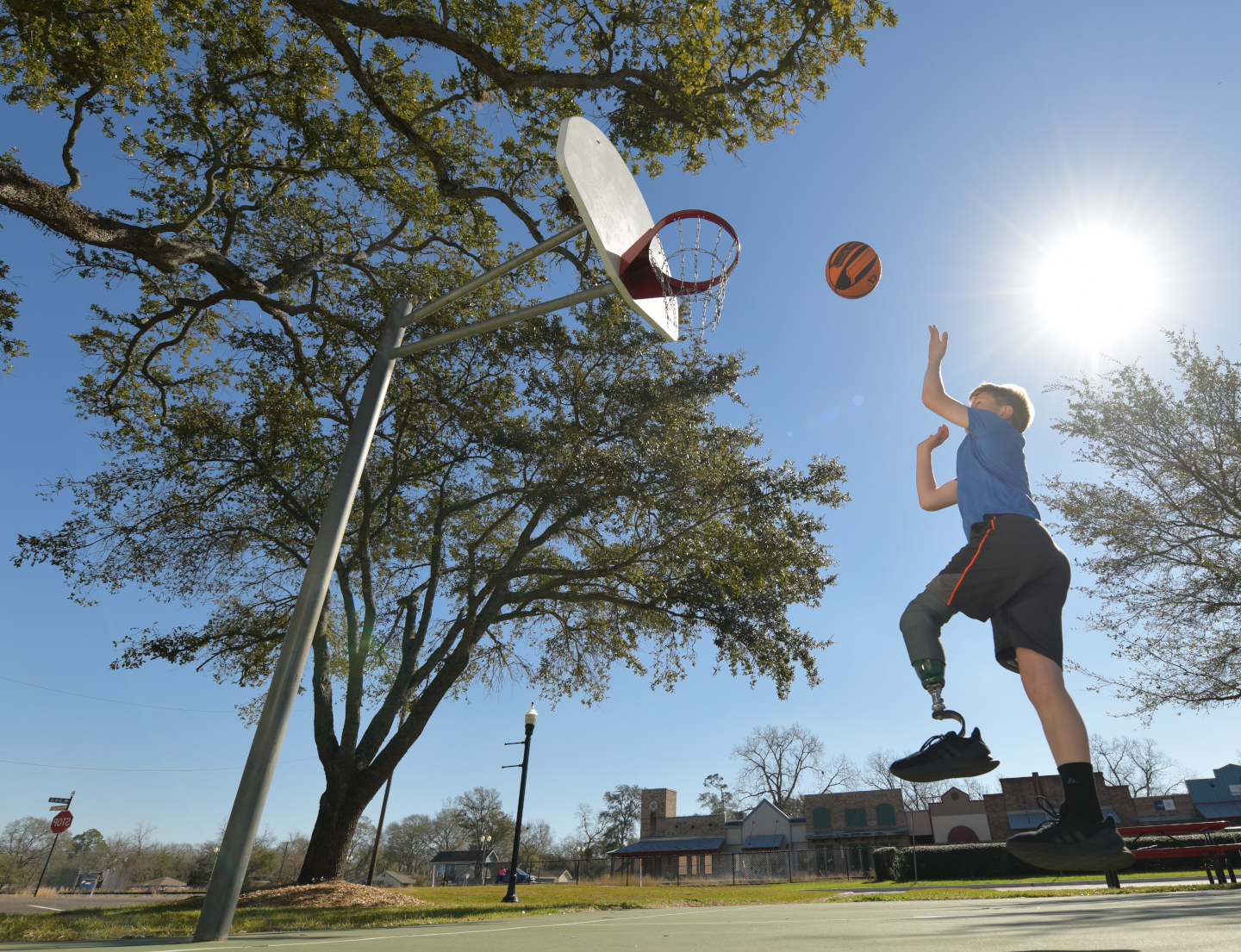
Pediatric Rehabilitation
Our Specialties
View All Specialties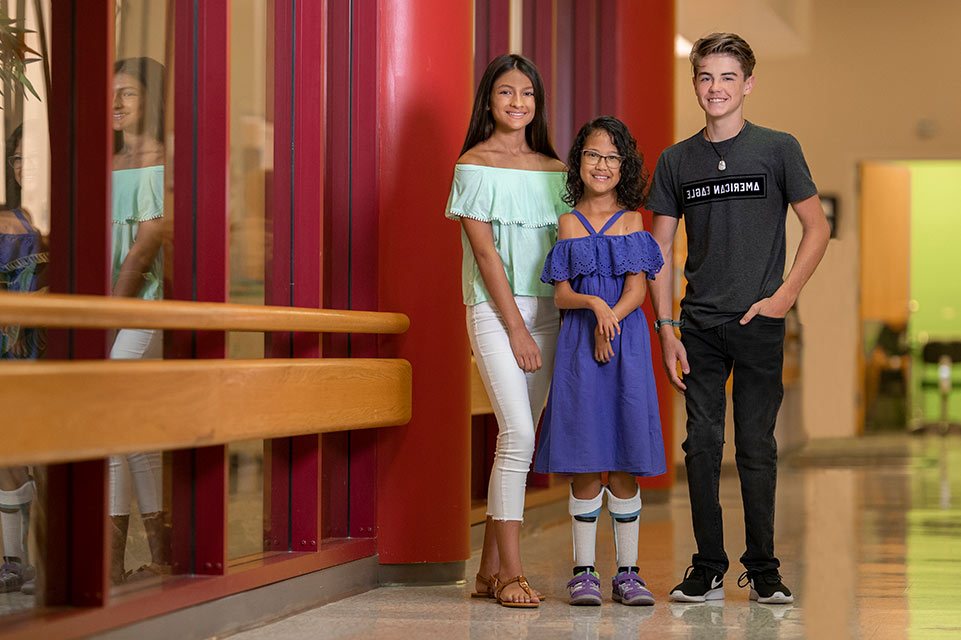
Pediatric Surgery
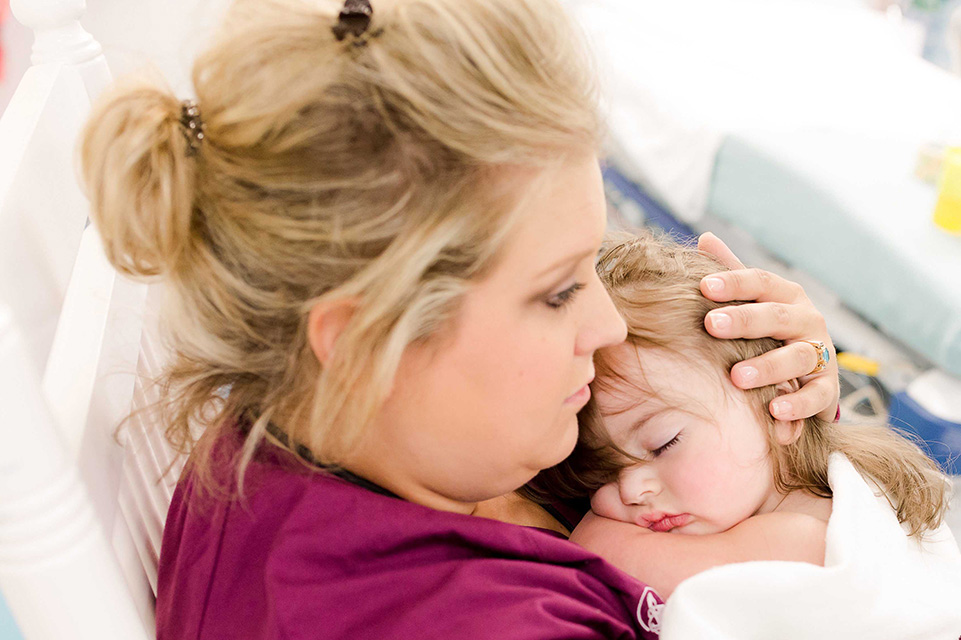
Spine & Spinal Cord
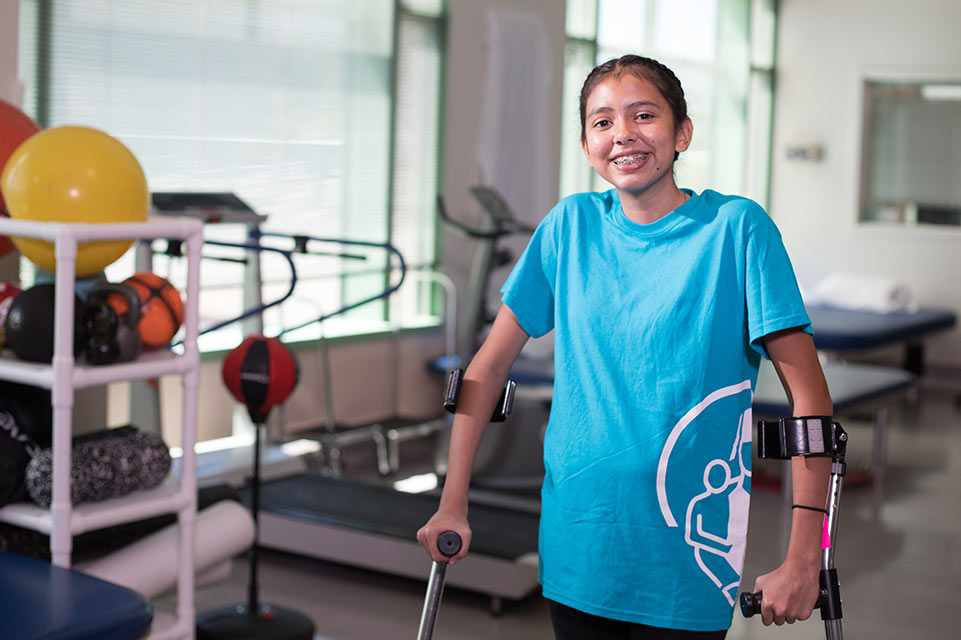
Urology
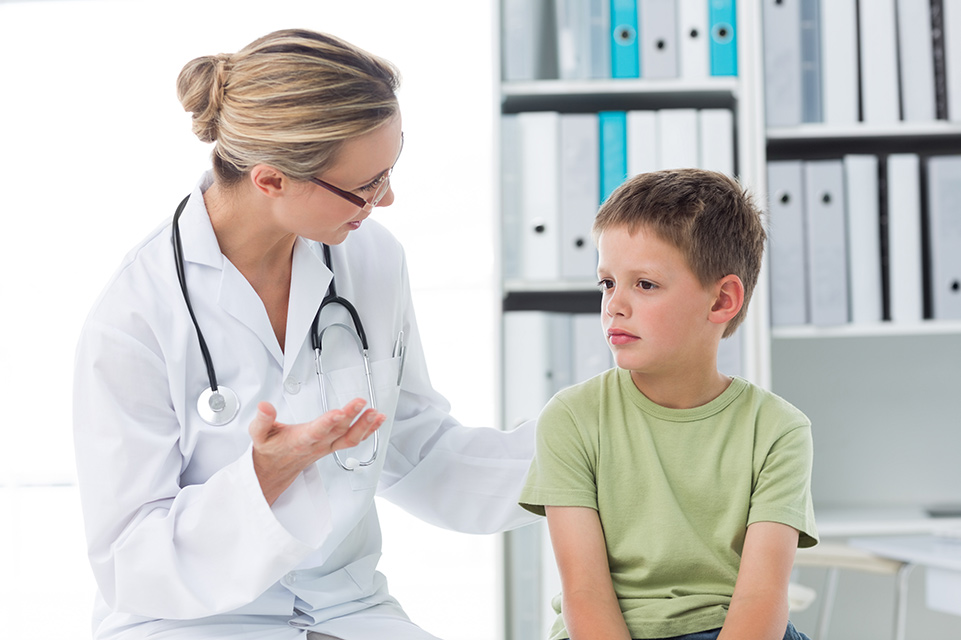
Related Services
- Aquatic Therapy
- Music Therapy
- Motion Analysis
- Pediatric Orthotic and Prosthetic Services (POPS)
- Radiology and Imaging
- School and Community Re-entry Program
- Wheelchair and Seating

